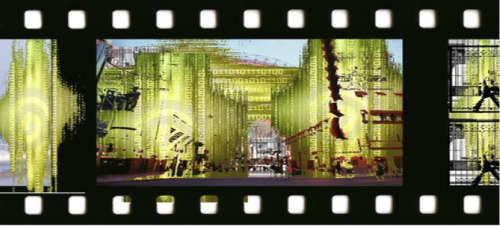Scalar and the Digital Messianism of Scholarly Publishing

By some accounts, there's an awful lot riding on the success of Scalar, a much buzzed-about digital publishing platform that is still working towards a beta release. As early as last February, Marc Parry suggested in The Chronicle of Higher Ed that if a tool like Scalar were to succeed in bridging some of the gap between popular web media and scholarly work, such a success could "perhaps bolster the agencies that finance it, a timely move now that Republican lawmakers, looking for federal budget cuts, are calling for the elimination of the [National Endowment for the Humanities]."
As consensus continues to coalesce around the idea that academic publishing must and shall do more to embrace digital media, the Scalar software is emerging as perhaps the best bet in what looks more and more like a high-stakes game. An earlier attempt at developing a multimedia authoring tool similar to what the Scalar platform promises produced a first-version failure and considerable frustration, despite high hopes and more than $2.5 million in funding from some of the same backers who are currently betting on Scalar. In the Chronicle article mentioned above, reporter Marc Parry quotes Bob Stein, a director of the Institute for the Future of the Book and collaborator on the failed version of the earlier authoring platform (known as Sophie and released in 2.0 last October), as saying that a new version of the tool would be a "holy grail" of sorts, and one has the sense that others share Stein's sentiment.
The pressure, in other words, is on to find the tool that will revolutionize the publication and reception of scholarly work on the web, and while neither Sophie 2.0 nor 2010's Anthologize platform has revealed itself to be the "chosen" technology, the people who are developing Scalar at the Alliance for the Networking of Visual Culture think that they, in fact, may have cracked the riddle of the much-anticipated "next big thing" in academic publishing.
Like Sophie, Scalar is premised on the idea that engaging, media rich scholarly work can be self-published on the web in a way that minimizes both requisite technical know-how and the probability of technical hassle. The difficulty in developing such an authoring tool, however, lies in striking the right balance between ease of use and sophisticated functionality. As Stein told Parry last spring: "It's easy to build an authoring environment that requires experts to use. It's very hard to build an authoring environment that somebody can use after reading two pages of instructions."
The devil here is indeed going to be in the details. Developers, publishers, and academics (the core communities, naturally, represented on the Scalar team) alike realize that any hope of engaging a crossover audience--a trick at which traditional academic publishing hardly excels--hinges crucially on being able to present the kind of immersive, visually compelling, web-based media product that increasingly tech-savvy and tech-demanding consumers are conditioned to expect. But that product also needs to be producible as the end result of a process within the reach of, say, an assistant professor of art history with a heavy teaching load, some substantial research commitments, and a CV that doesn't prominently feature code-wrangling.
If the question, then, is one of delivering the right means of production to the right people at the right time, is Scalar the answer? As yet, it's much too early to tell. The first article published with Scalar only appeared a few months back, and although the platform's immersive "text as network and network as text" repackaging of the traditional scholarly journal article as something more akin to a thoroughly linked and media rich website is certainly provocative, a great deal remains to be decided about the fate of the software.
For that matter, even if Scalar does turn out to be the "holy grail" authoring tool that everyone is awaiting, there's no gaurantee that its adoption (which would, in turn, depend heavily on the academy coming around to the idea that Scalar-produced-type works could count towards tenure) would be followed by any real expansion of the current audience for scholarly work. Such an expansion (and the salutary effects it might have on funding prospects) certainly constitutes an appealing vision, but for the time being, it remains only that.